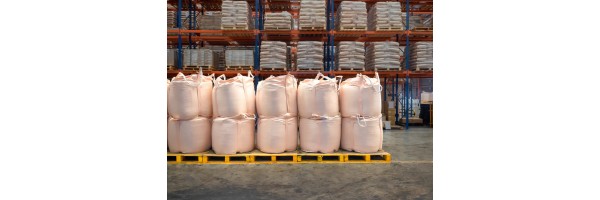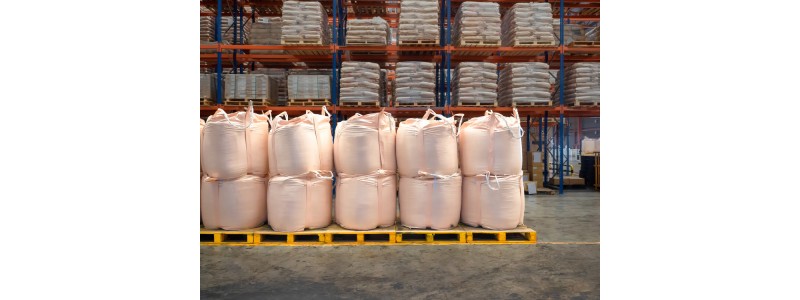
As the leading supplier of FIBCs, Centurion Packaging get plenty of questions about the construction of the containers and how to choose the right one for specific applications.
Our job is to ensure all of our customers have the best bag for their product, and this can depend on the type of materials that you are storing or transporting.
Here we will examine the difference between uncoated and coated bags plus we will share the most common uses for both of these bags.
What is are 'Uncoated' Bulk Bags?
Flexible Intermediate Bulk Containers are usually constructed by weaving together strands of polypropylene and because of its woven design materials that are very fine could seep through the weave or sew lines. Fine sands or powders are an example of products where this could be an issue.
If you are packing powder in an uncoated bag and you hit the side of a full bag you could see a cloud of the product leaving the bag. While this is fine for some applications, for others it is not. An uncoated bags weave also allows air and moisture to pass more easily through the polypropylene towards the product you are packing.
The Most Common Uses for Uncoated Bags
- Transporting or storing specific types of food-grade and non-food grade products
- Transporting or sorting any product that is granular and is the size of grains of rice or larger such as beans, grain, seed and popcorn
- Moving goods that need to breathe
What is a 'Coated' FIBC Bulk Bag?
A 'coated' bag is manufactured similarly to an uncoated bag, however, before the bag is sewn together another polypropylene film is added to the bag's fabric which seals any small gaps in the poly weaves. The film can be added to the inside or outside of the bulk bag.
Inside the bag is the most common because it can keep products like powders from getting stuck in the weave when discharged. Coating can be tricky to detect if you are not very familiar with FIBCs. The simplest way to tell if a fabric is coated is to press the weave together and see if it spreads apart. We would recommend testing both the outside and inside of the bag and if the weave does not spread apart then there is a good chance the bag is coated.
What are the Benefits of Coated Bags?
One of the main benefits of a coated bag is the increased protection it offers the materials being stored or transported. FIBCs can be found in warehouses, construction sites and manufacturing facilities. These sort of environments harvest contaminants such as dust, moisture and dirt but the coating of the bag provides a moisture barrier plus an added layer of protection.
If you are packing powder and hit the side of the bag when it is full, you will not likely see a cloud of product leave the bag like an uncoated bag. Coated bags are also useful for packing small granular or powdered product.
The Most Common Uses for Coated Bags
- When you need a barrier from water or moisture
- Transporting dry flowable products in powder, crystal, granule or flake form such as detergents, salt, flour, cement and fine minerals such as carbon black, sugar or sand that need moisture protection.
- A poly liner can also be used along with a coated bag to add an extra layer of protection
Coating on bulk bags only acts as a moisture barrier and will not keep liquid out and it will not keep liquid in.
Some granular products and powders are so fine that need additional features such as sift proof seams, that keep the product from coming out of the sewn holes. This will increase the price but provides an extra layer of protection to stop the product from escaping the bag.
For a lot of products, coating and sift proof seams are not enough, and in this case, we would recommend a bulk bag with a polythylene liner. Powdered sugar is a product that frequently uses bulk bags with liners.
Get in Touch for More Information
If you would like to know more about Centurion Packaging’s range of bulk bags, please contact us today.

 5% OFF YOUR FIRST ORDER OVER £50! JUST USE COUPON “MY1STORDER” AT THE CHECKOUT FREE NEXT DAY DELIVERY FOR MOST UK MAINLAND ORDERS, PLEASE SEE T&C'S
5% OFF YOUR FIRST ORDER OVER £50! JUST USE COUPON “MY1STORDER” AT THE CHECKOUT FREE NEXT DAY DELIVERY FOR MOST UK MAINLAND ORDERS, PLEASE SEE T&C'S
.jpg)